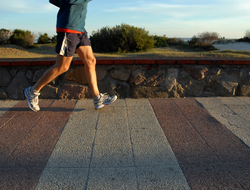Aerobics: More than cardiovascular fitness
Published: May 13, 2022
Aerobics, aerobic dance, cardio dance, step aerobics, and hi-lo aerobics are some of the names given to a form of aerobic exercise which is choreographed and set to music.
Aerobics was popularised in the 1980s by Jane Fonda.
Since that time many other celebrities and fitness professionals have created various forms of choreographed, musically orientated, aerobic exercise.
People participate in aerobics for many reasons such as pleasure, social engagement, aesthetics, weight loss, physical fitness, and health.
Aerobics, when performed according to the FITT principle (frequency, intensity, time and type) can provide you with a range of health and physical fitness related benefits.
In recent years, aerobics once at the forefront of exercise prescription, appears to have been replaced by an emphasis on interval training, circuit training, boot camps, and various types of dance orientated classes.
All of these forms of exercise have fitness and health benefits.
However, if you have specific health and physical fitness goals which demand aerobic exercise how can you ensure you are choosing the physical activity that will help you achieve your goals?
Aerobic exercise and energy use
In relation to physical activity and exercise, aerobic refers to energy production which requires oxygen.
Aerobic exercise is defined as physical activity which requires an adequate supply of oxygen to sustain physical activity for a relatively long period of time.
Aerobic exercise occurs over a range of intensity levels.
For instance, slow walking to fast running provided continuous movement occurs for a period of time which necessitates the use of oxygen in the production of energy to move your body.
The energy molecule which fuels your body is adenosine triphosphate (ATP) and small amounts are available all the time to all body tissues.
References
1.
Corbin, C.B. & Lindsey, R. (1994). Concepts of Physical Fitness. Dubuque, IA: Wm. C. Brown Communications Inc.
2.
American Council on Exercise (1996). Personal Trainer Manual. San Diego, CA: American Council on Exercise
3.
Whitney, E. & Rady Rolfes, S. (2005). Understanding Nutrition. Belmont, CA: Thomson Wadsworth


